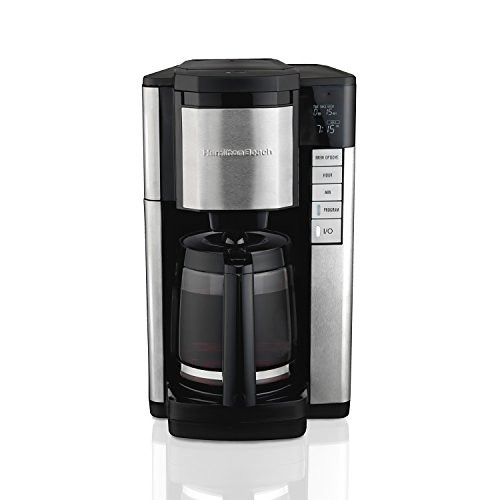Leaky Kitchen Abstractions
Consider your kitchen knife.

A chef’s knife.
Metallurgy is a complex subject, and you don’t know how your knife is made. But looking at it, holding it, you can come to understand everything that matters about it. You deal with it as a thing-in-itself. This is not to say the knife is simple. There are many handholds, many ways to use it. You can cut with different motions, you can use the flat side to crush garlic, you can scrape up something you chopped, use the handle to muddle something, etc. But it resists abstraction.
Coffee
On the other hand, think about a basic drip coffee maker.

A coffee maker.
There is a single set of steps that you follow to use this. You add water, a filter, and coffee, and press the “on” button. You may understand how it functions, but you don’t need to. There’s not much you can vary, if you’re following the instructions: the amount of water you add determines how much coffee comes out, and the coffee:water ratio determines the strength of the coffee.
It is possible, with effort, to overcome functional fixedness. This allows you to see through the abstraction and use this device in unintended ways, like cooking a three-course meal.
But additional features, meant to be helpful, continue creating abstractions that are in many cases unhelpful. For example many coffee makers allow you to toggle “brew strength”. This seems like a nice feature: some people like stronger coffee, others like it weaker, and you can simply choose how strong you want it. But what does this really mean? What is the “strength” of the coffee? There are many variables that might go into perceived strength, and people might differ in which of these they like. For example, when I think of “strong” coffee what I mean is high caffeine. Someone else might mean a darker roast, which is actually less caffeinated.
There is no easy way to learn what this feature does on a physical level. You are not meant to know, you are only meant to press or not to press.
The answers here suggest that there are a few possibilities for how it works:
- Strong mode dispenses the hot water more slowly, leaving water in contact with the grounds for longer -> more is extracted.
- Normal mode doesn’t run all the hot water through the coffee, essentially it makes coffee and dilutes it with some hot water. Strong mode is “normal”.
- Strong mode “blooms” the coffee.
One other (implausible) idea:
- Normal mode doesn’t use boiling water directly, but allows it to cool slightly. Strong mode fixes this.
The designers of this coffee maker want to make my life easier. They want to take the incredible complexity of the physical world and distill it into a simple binary of strong coffee / normal coffee. But whether I want to use strong mode or not will depend on which of these implementations underlies the “strong mode” abstraction. Respect for users, and for the world, requires allowing you to peer through.
Also: toasters
Another example is the “bagel mode” on toasters. This can work in at least two ways:
- One heating element gets hotter than the other (or one is off entirely), so that only the cut side of the bagel gets toasted.
- Increasing the toasting time.
Again, these are different, and I might care which of them is in use.
Comments (0)
To leave a comment on this post, send me an email.
Revision History
(About)